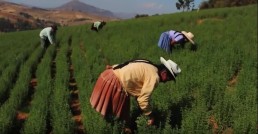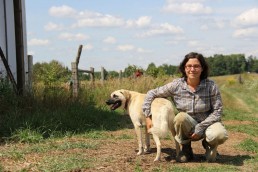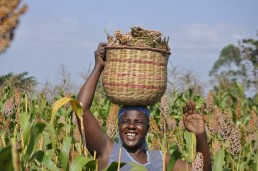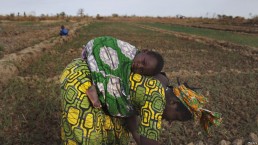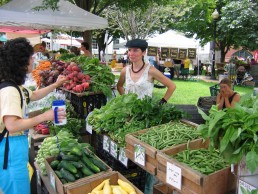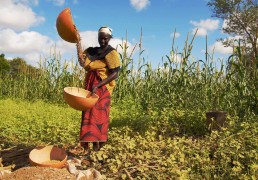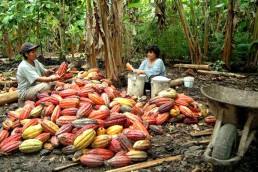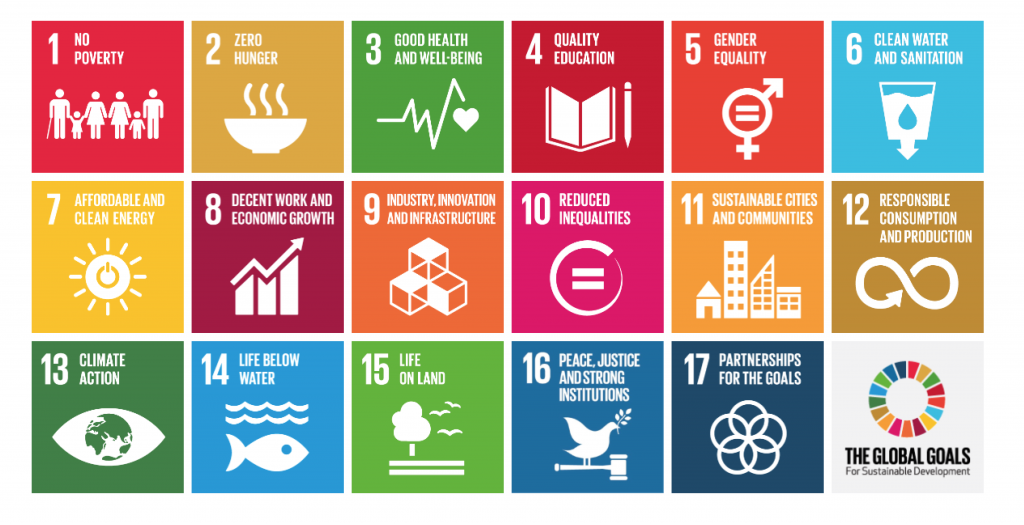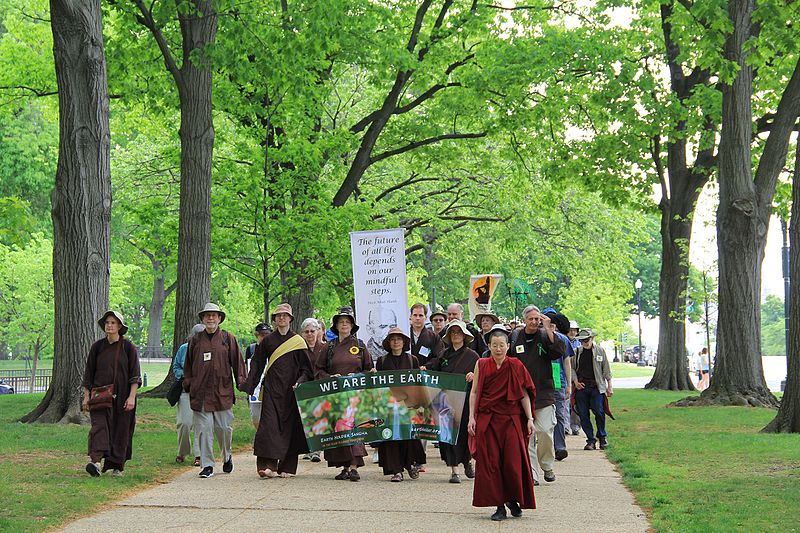BOOK | Farming for the Long Haul
The following excerpt is adapted from Michael Foley’s book Farming for the Long Haul: Resilience and the Lost Art of Agricultural Inventiveness (Chelsea Green Publishing, February 2019) and is reprinted with permission from the publisher.
In our society women and seniors make up the majority of the caring community. They see to the needs of neighbors, organize the potlucks and fund-raisers for families in distress, and make up the army of volunteers that sustains most of community life. Traditionally, women rarely pursued the hunt for larger game, but frequently helped bring in smaller game and fish. They often were the farmers for the community, as women are in many parts of Africa today. As we have seen, they dressed the skins, beat the flax, spun the wool or cotton, and fashioned most of the clothing and housewares of the community. They nurtured the children and one another, nursed the sick, and served as midwives and herbalists, whether male shamans assumed major healing roles or not. And they generally served as the conscience of the community, sometimes formally, as in Iroquois society, more often informally. In the ancient Middle East, these roles were submerged in the jealous dominance of male heads of households. And in late medieval Europe, as we saw in the last chapter, many of them were demonized as women were pushed out of public life and denied rights to property or even their own persons. But women continue to play pivotal roles as the core of the caring community even in the harshest patriarchal societies, which often sentimentalize them while repressing them.
Once we recognize the true dimensions of our relational economy and the caring community that supports it, and learn fully to value it and reward those who sustain it, we can take steps to rebuild and enlarge it. We can openly attack the presumption, so widespread in American rural culture, that families do not owe a start to their children, that Junior must pay full market price to take over Grandma’s place. We can build collective vehicles for providing farmers with access to land, cooks with access to kitchens, and all of us with access to real health care. We can celebrate and enlarge volunteerism and build volunteer buyers’ clubs, informal gardening and gleaning co-ops, and information exchanges to enhance access to affordable local foods. We can promote sharing among farmers and neighbors, turn informal tool lending into tool banks, build shared cold storage, exchange seeds and scions, and, of course, find more and more ways to share knowledge.
And more: We can support local food banks, help provide housing for interns and aspiring farmers working rented land, take a hand in securing the welfare of everyone in our community, and support local institutions that provide for the homeless, victims of domestic violence and discrimination, and the elderly. All of this is going on now in many parts of the country and the world, and more will come as we shake off the notion that caring for one another has nothing to do with the struggle to get a living off the land and is best left to governments and nonprofits, or requires credentials, formal institutions, or official status.
Governing the Commons
Not that communities do not also depend upon institutions. Formal governance provisions are also a part of traditional social orders, essential to making villages, towns, irrigation associations, and communal obligations work. Virtually everywhere, even when chiefs or kings or states claim ultimate jurisdiction, traditional societies have governed themselves in important ways, reserving the most immediate decisions about community life and even the local economy to democratic processes within the community. The New England town meeting is one remnant of that, still vibrant in some places, though stripped of much of its authority by statehouses and their bureaucracies. Alpine villages and traditional irrigation societies still in operation in parts of the world today are self-governing institutions, with sometimes elaborate rules for managing common pastures or water flows.
Governing institutions that work, that have persisted for hundreds, even a thousand years and more, have certain characteristics. For one thing, at the local level they are democratic. That does not mean that their societies are completely egalitarian. Democratic rights may be limited to only some members of the community. It was common in many village societies, for example, to limit voting rights to property holders. These were usually the heirs of founding families in the community, and often males only. Newcomers who acquired property might be admitted to formal membership, and heirs who divided property between them might also be accommodated. Rules varied. But because decisions had mostly to do with the uses of property and the agricultural cycle, heads of households often reserved decision making to themselves. When it came to larger matters, however, like electing town officials or organizing communal work, many village societies extended the vote to a village assembly. In the New England town meeting, for example, all adult members have come to have a vote. Town meeting maintained roads, schools, maybe a library. It elected a town constable and might even maintain a jail. Mexican villages, especially those with an indigenous heritage, often practice this more inclusive democracy.
Similarly, in the irrigation systems of eastern Spain, dating back perhaps a thousand years, and in the Ilocos Norte of the Philippines, decision making is confined to those with rights to irrigation water, which are principally determined by property along the irrigation canals. Assemblies of irrigators elect officials annually, determine rules for the distribution of water depending upon availability, and participate in communal work. Similar arrangements characterize the acequias of New Mexico, reflecting the Moorish, Spanish, and indigenous heritage of these small-scale waterworks. By contrast, in several of the fisheries Ostrom examined, attempts at governance either did not start or broke down because of the difficulty of maintaining exclusive control of the waters in question.
Other important features characterized successful governance systems. For one thing, states have to acquiesce at least tacitly to the right of users to organize and govern themselves, something lacking in most state-constructed irrigation systems, which consequently have a bad record for serving farmers well. In New Mexico, the New Mexico Acequia Association had to fight for the reversal of a state law that had permitted members to sell water—a privatization of water at variance with acequia principles. Though the state constitution recognized acequia associations as having jurisdiction over their waterworks, the private property bias in US lawmaking presumed that water was a commodity, eligible for sale by the individual member. Similarly, the inland fisheries of Nova Scotia and Newfoundland, traditionally and successfully governed by local fishers, are endangered by the Canadian state’s insistence that it alone has jurisdiction. Governing common resources like Alpine meadows or irrigation systems or fisheries generally requires the more restricted democracy of designated stakeholders only. In fact, Elinor Ostrom found that one key to the success of such systems is establishing clear boundaries that define precisely who enjoys rights to the resource. In the case of Alpine meadows, villages own most of the meadows. Rights to graze are restricted to citizens, who are allowed only as many cows on the meadow as they can feed over the winter, and this, in turn, determines how much cheese each household receives from the cheesemakers. In traditional Japanese villages, decision-making rights regarding the commons are based on cultivation rights, tax obligations, or ownership, varying from most heads of households to only a few. Rights of access are restricted to recognized households. Common property provides villagers with lumber, firewood, thatch for roofing, material for weaving and basket-making, animal fodder, medicinal plants, and so on. Elected officials determine just when harvesting might begin and how much each household can take.
Resilient Women Farmers Around the World
Women on average make up 43 percent of the agricultural labor force in developing countries. Land tenure security can increase a women farmers’ decision-making power and her choice to implement farming techniques that are more resilient to climate change.
Countries can work toward making this a reality—revising national laws and policies, committing the resources and capacity for their implementation, and gradually changing attitudes within families and the community. (source: FAO – Food and Agriculture Organization of the United Nations)
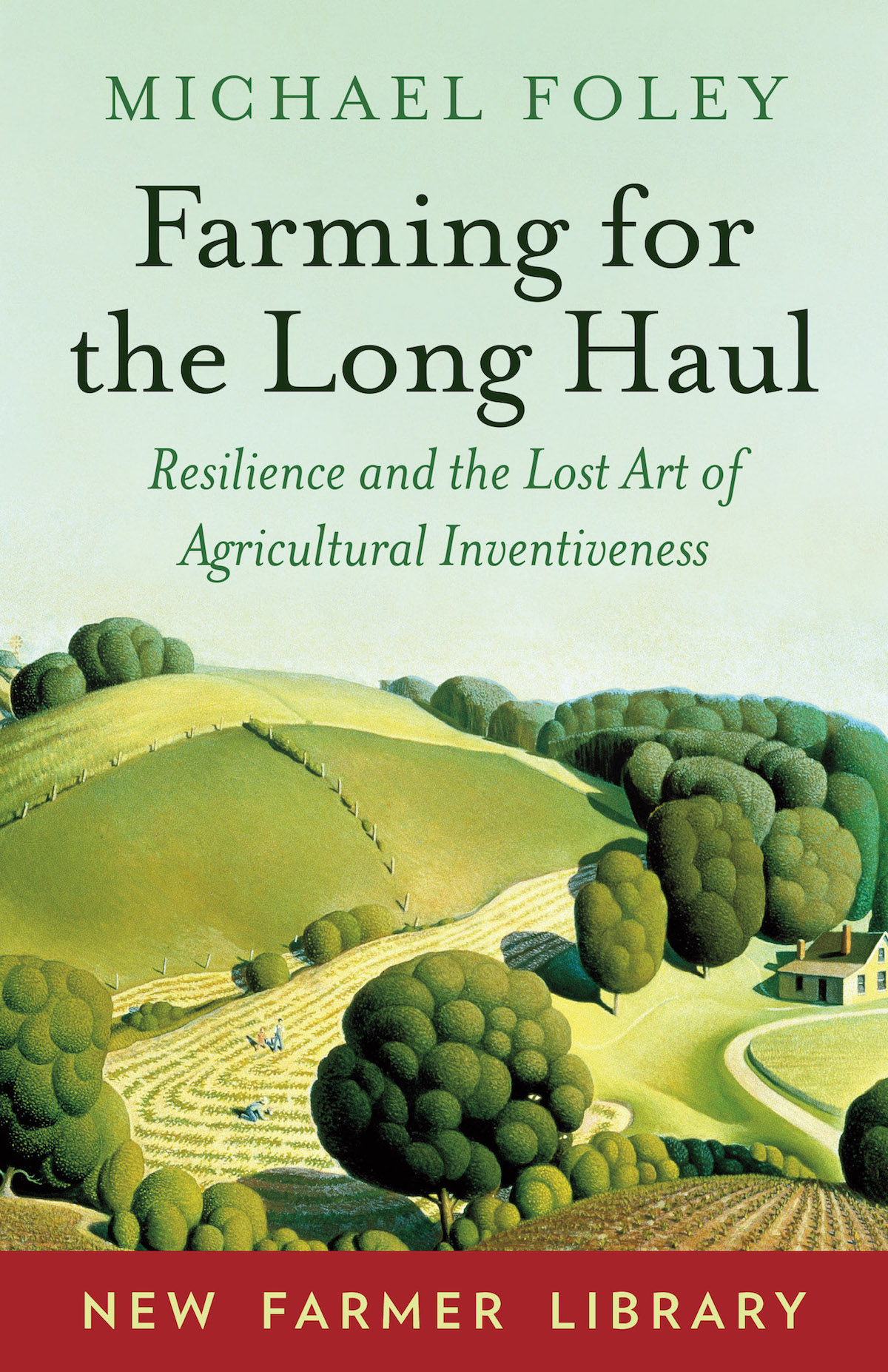
Equally important, the commons governance systems Ostrom examined had careful monitoring mechanisms built in to protect them from abuse. In Nova Scotia and Newfoundland, fishers in inland waters have traditionally managed to chase off those without village residence and monitor one another’s use of equipment, which has the effect of limiting take. The Alpine villages appoint guards to count the number of cattle as they are delivered to the meadow, and villagers keep an eye on one another to ensure that overwintering rules are honored. Paid monitors figure prominently in traditional Japanese commons management, with guards often exacting a bit of sake for minor infractions. And in the irrigation societies of Spain, the Philippines, and the New World, official water monitors are often responsible for opening and closing gates as each farm comes up for irrigation water. But even when farmers are in charge, both water monitors and neighboring farmers are there to notice premature or otherwise illegal withdrawals.
Finally, successful systems have means of sanctioning those who abuse the resource or the rules, but sanctions are generally minor and graduated, discouraging resentment and encouraging compliance. In Spain a water court hears cases once a week and decides upon sanctions, which start with a few pennies but could lead to expulsion for the rare repeat offender grossly abusing the system. In Japan guards might fine villagers for minor offenses, but more serious offenders could be deprived of their harvest and equipment. They would have to pay a fine to the village to recover the equipment.
Ostrom finds that key to these systems of governance are their democratic institutions, which mean that users have a stake in the rules and they can adapt the rules to their particular situation and to changing circumstances. For that reason, the rules for each of these systems vary from village to village, watershed to watershed, fishery to fishery. And where elected officials have discretion in implementing the rules, as in the Japanese village headman’s decision over when to start harvest, users can object by mass disobedience and, eventually, democratic change.
I have spent some time on these systems because they illustrate so well what it takes to manage our common interests. None of these institutions works without organized meetings, decision-making procedures, rules, and considered decisions about the business at hand. They are no more, nor less, complicated than our own contemporary agricultural cooperatives. But many of us shy away from the complexities of organization, the tediousness of meetings, the difficulties of devising decisions that serve us. We mustn’t. At a minimum, we will need to support the organizations that support us through annual meetings and active attention to the issues that confront us and the people we elect to serve us. Liberty has a price, as Thomas Jefferson famously remarked, and his “eternal vigilance” didn’t mean a propensity to grouse about decisions we have left to others.
We will need more, not fewer, self-governing local institutions over the next decades, enriching community among us and providing the sorts of opportunities the state has proven inept at providing. The so-called health care crisis is a case in point. As much a crisis in the sort of health care we are given as in its financing, it is not likely to find a national or state-level solution. But as a community, we owe it to one another to forge a response that can serve all our members. Didi Pershouse provocatively notes that, “No one in the United States ever suggests that we should not pitch in to pay for the fire department, because we all understand that any of us could need them at any time. The same is actually true of health-care providers. If your house is burning, you need the fire department. If you are sick, you need care.” At least one community has risen to the challenge and created its own self-governing health care alliance, offering care at steep discounts to members, who pay a modest fee to join.
Providing food for all is the natural challenge facing the farmers of the coming decades. With food stamps and the market match program that currently brings food stamp customers to farmers markets both on the chopping block, it will be important for more of us to consider how we can give back to the larger community that is our home. Maverick agricultural economist John Ikerd actually suggests we establish “food districts” on the model of school districts and fire districts to pay farmers to provide food for the community. If we manage to move in that direction, the new institutions will have to be a good deal more accountable than their models, but that depends largely on the willingness of ordinary citizens and farmers to get involved. More informal projects, like the FrutaGift free farm stand in Fruitvale, California, or the neighbors’ food exchange in suburban Altadena that climate scientist Peter Kalmus describes, can distribute food without the sometimes arcane rules and cash economy of our farmers markets. We will look more closely at the sorts of economic and political organizations farmers will need to grow as the century unfolds in the next two chapters. For now it’s enough to note that democracy is not the hothouse plant of ancient Athens, revived for the world to emulate with the American Revolution. It is the common heritage of humankind, to all appearances our most primitive form of social organization, an impulse deeply embedded in our consciousness. Its exercise is essential to community and essential to providing for ourselves in a world in which the illusion of rational government at the service of all citizens equally has long since lost its conviction.
Just as much as farmers will need vibrant economic and political organizations, we will need, and need today, the everyday community that includes our friends and neighbors, our buying public, our school district and fire district, our local government, our downtown merchants. Everyday community depends for its vitality on organizations of all sorts, from fraternal orders to food banks. And in the best of cases, these, too, are democratically run. Joining those older community efforts is one thing we can do right now to begin to revitalize and steer our communities toward resilience for the long haul.
The Interview with Michael Foley
Is there a relationship between food and global citizenship?
Global citizenship is a double-edged sword. On one hand, it is a corrective to the destructive competition and self-aggrandizement of nation states and to runaway corporate imperialism (sometimes part of the same package). On the other hand, it can be a pretext for superficial, globe-trotting reality tourism or, often worse, well-meaning interventions designed to incorporate the benighted poor into the twenty-first century, always on our terms. If global citizenship is really to serve our world, it has to consist of concrete support for genuinely local efforts to address local needs. And that means, first and foremost, opposing the sort of interventionist globalization that corporations, their nonprofits, and their governments are trying to foist on the world.
This is where the whole food question comes in, because food production is still central to the cultures of perhaps a majority of the world’s population. So we want local cultures to maintain their hold on their land and landways, not see them transformed into “modern” large-scale agricultural enterprises or incorporated into supply chains for the affluent West. We want to learn from indigenous cultures how they conserve and build their soil, so we can support those approaches and make that knowledge more widely available. We want to encourage community resilience wherever the reach of governments, corporations, or NGOs threatens farming communities with top-down and one-size-fits-all “solutions.” For most of us, that will mean working right here at home to rein in the tendencies of our society to impose its solutions, its styles of doing things, its culture, and, of course, its needs on the rest of the world.
In what ways are we losing the spirit of ‘agricultural inventiveness’, and what are the impacts?
There’s no doubt there is still a lot of inventiveness in American agriculture. I don’t know a farmer who isn’t inventive. The young farmers’ organization Farm Hack is an example of the revival of traditions of inventiveness that have never left the countryside, even if farmers today are more likely to invent a new machine than new ways to handle draft horses. But for too many of us, and particularly for too many large farmers, an awful lot of inventiveness has been handed over to the “experts.” For thousands of years, farmers have been developing new crops especially suited to their locales, needs, and tastes. They have been very, very good at it. Now, we’ve turned most of this over to certified experts, first at the land-grant universities, now increasingly at corporations like Monsanto. And those same corporations have promoted just a few varieties for commercialization while buying up the rest and excluding them from the marketplace.
The result has been the impoverishment of our food supply, with fewer and fewer varieties planted and narrower and narrower criteria for development of new varieties. And along with this, farmers (like most of the rest of us) have lost the sense that they have the capacity to oppose the choices of the experts. The same thing has happened with the rest of the technical side of farming, from fertility to pest control to harvest and packing. Experts and expert systems—many of them mandated by law in the name of “food safety”—have replaced the art of farming that once richly met the needs of farmers and consumers. And alongside the cultural impoverishment of farming has come its economic impoverishment, as all these expert-generated products have had to be included on the expanding expense side of the ledger.
How does our current food industry reflect imbalances of power, and what can we do?
Farmers in urban civilizations have always been subject to powers beyond them. Indeed, there is ample evidence that urban civilizations were invariably built on the conquest and subjection of farming cultures. Our current food industry grew out of the defeat of farmers’ efforts in the late nineteenth century to win fair prices for their production. Giant corporations grew more massive on cheap commodities, made cheaper starting in the 1970s by massive government subsidies to commodity production. Those subsidies today ensure that the processing industry can take very cheap corn, wheat, and soy and turn it into the junk food that fills our supermarket shelves; that the meat industry can take those same cheap commodities and turn them into the unhealthy meat of most Americans’ daily diet. The refusal of a government increasingly controlled by the largest corporations to enforce anti-monopoly regulations long on the books means that smaller meat producers are confined to niche markets if they are not simply driven out of business. And small farmers must compete for consumer dollars with the cheap processed food proffered by the supermarkets and grocery outlets.
We will not get redress of our grievances from either Republicans or Democrats. Dismantling the current system means organizing production and sales outside it altogether. Because eating, as Wendell Berry says, is “an agricultural act,” dismantling the system also depends upon “eaters” refusing to participate, refusing to buy anything—organic, “natural,” or not—from those supermarkets, from that system. For many urban people that will require real effort and perhaps a bigger food budget. So be it. If we want out from under a food system that is killing both consumers and farmers, then we will have to step away from it.
What roles do women play in a thriving food future, and how can we restore food as a commons?
I was educated by “second-wave” feminists for whom the suggestion of essential differences between men and women was always suspect. And I’ve always been the main cook and often shopper for my family. That said, it’s apparent that women have a central role in the food production of most households and will continue to do so; so they are the decision-makers who are driving much of the local and organic food movement. They also make up—as they have in most societies throughout the world—the vast majority of herbalists, wildcrafters, and healing specialists. Increasingly, women are also leading the local food revolution as farmers and ranchers. And women, perhaps because of their traditional role as caretakers, make up much of the professional non-profit and government support network in programs to promote local food to meet local needs, nutritional education and training, and healthy food-for-all.
If food has ever been a “commons,” it was in the sense that in traditional societies, no-one was allowed to starve. Food, in fact, was widely shared. Even where markets existed—and they played only a small role in most societies before the market revolution of the eighteenth century in England—food was produced for local consumption, and it was assumed that food was shared among family and neighbors. Sometimes elaborate systems of redistribution were devised to see to it that all had access to food, no matter their personal ability to produce it. We are already returning to that tradition, at least where community gardens are flourishing and where rural people look beyond farming as a “business” and share resources of all sorts in loose networks of giving and barter. As long as farmers need to make money, we will have a mixed system. But as the money economy becomes more and more precarious, we will see a revival of older systems of production for use, that is, for sharing.



